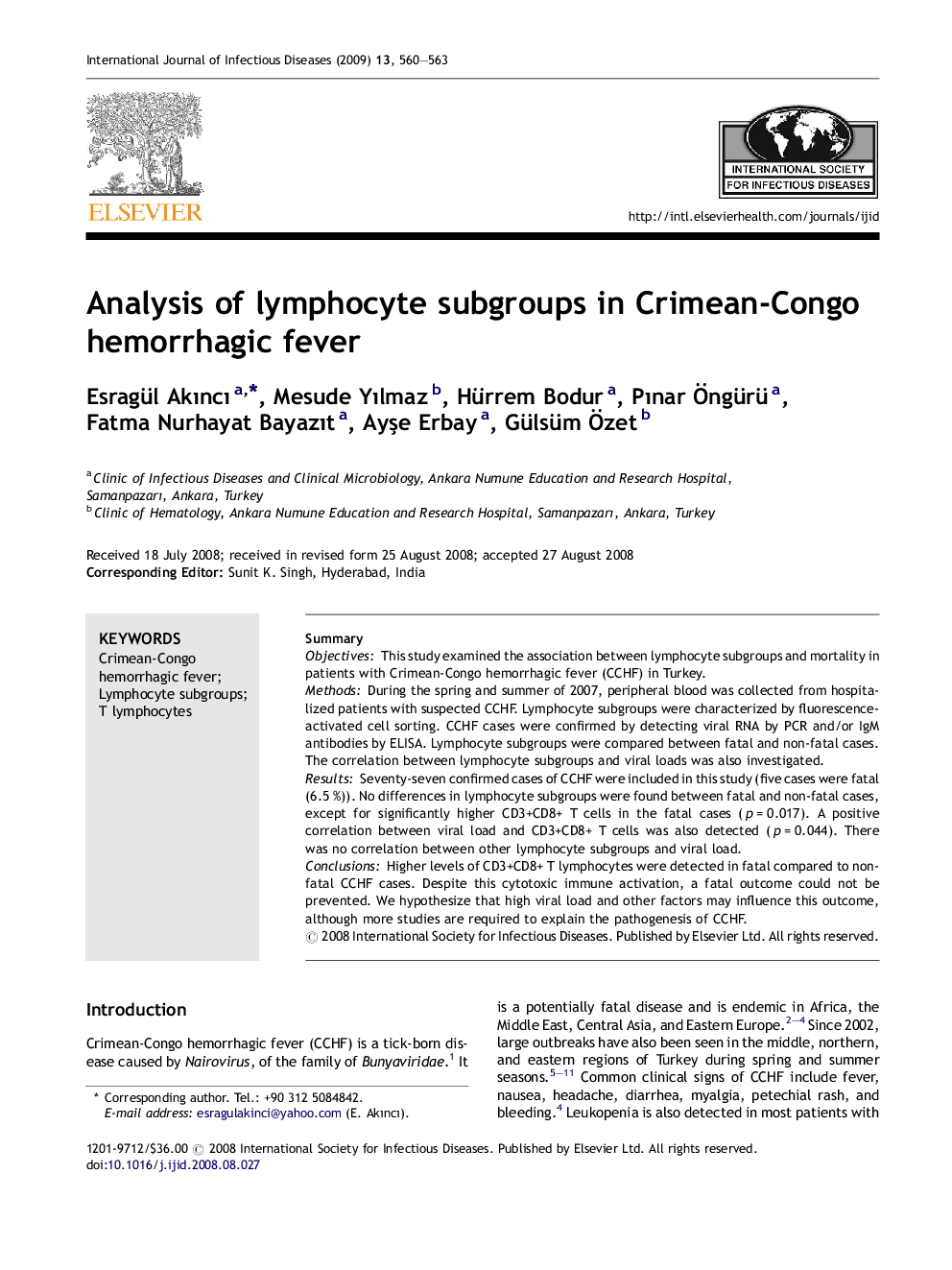| Article ID | Journal | Published Year | Pages | File Type |
|---|---|---|---|---|
| 3364401 | International Journal of Infectious Diseases | 2009 | 4 Pages |
SummaryObjectivesThis study examined the association between lymphocyte subgroups and mortality in patients with Crimean-Congo hemorrhagic fever (CCHF) in Turkey.MethodsDuring the spring and summer of 2007, peripheral blood was collected from hospitalized patients with suspected CCHF. Lymphocyte subgroups were characterized by fluorescence-activated cell sorting. CCHF cases were confirmed by detecting viral RNA by PCR and/or IgM antibodies by ELISA. Lymphocyte subgroups were compared between fatal and non-fatal cases. The correlation between lymphocyte subgroups and viral loads was also investigated.ResultsSeventy-seven confirmed cases of CCHF were included in this study (five cases were fatal (6.5 %)). No differences in lymphocyte subgroups were found between fatal and non-fatal cases, except for significantly higher CD3+CD8+ T cells in the fatal cases (p = 0.017). A positive correlation between viral load and CD3+CD8+ T cells was also detected (p = 0.044). There was no correlation between other lymphocyte subgroups and viral load.ConclusionsHigher levels of CD3+CD8+ T lymphocytes were detected in fatal compared to non-fatal CCHF cases. Despite this cytotoxic immune activation, a fatal outcome could not be prevented. We hypothesize that high viral load and other factors may influence this outcome, although more studies are required to explain the pathogenesis of CCHF.
